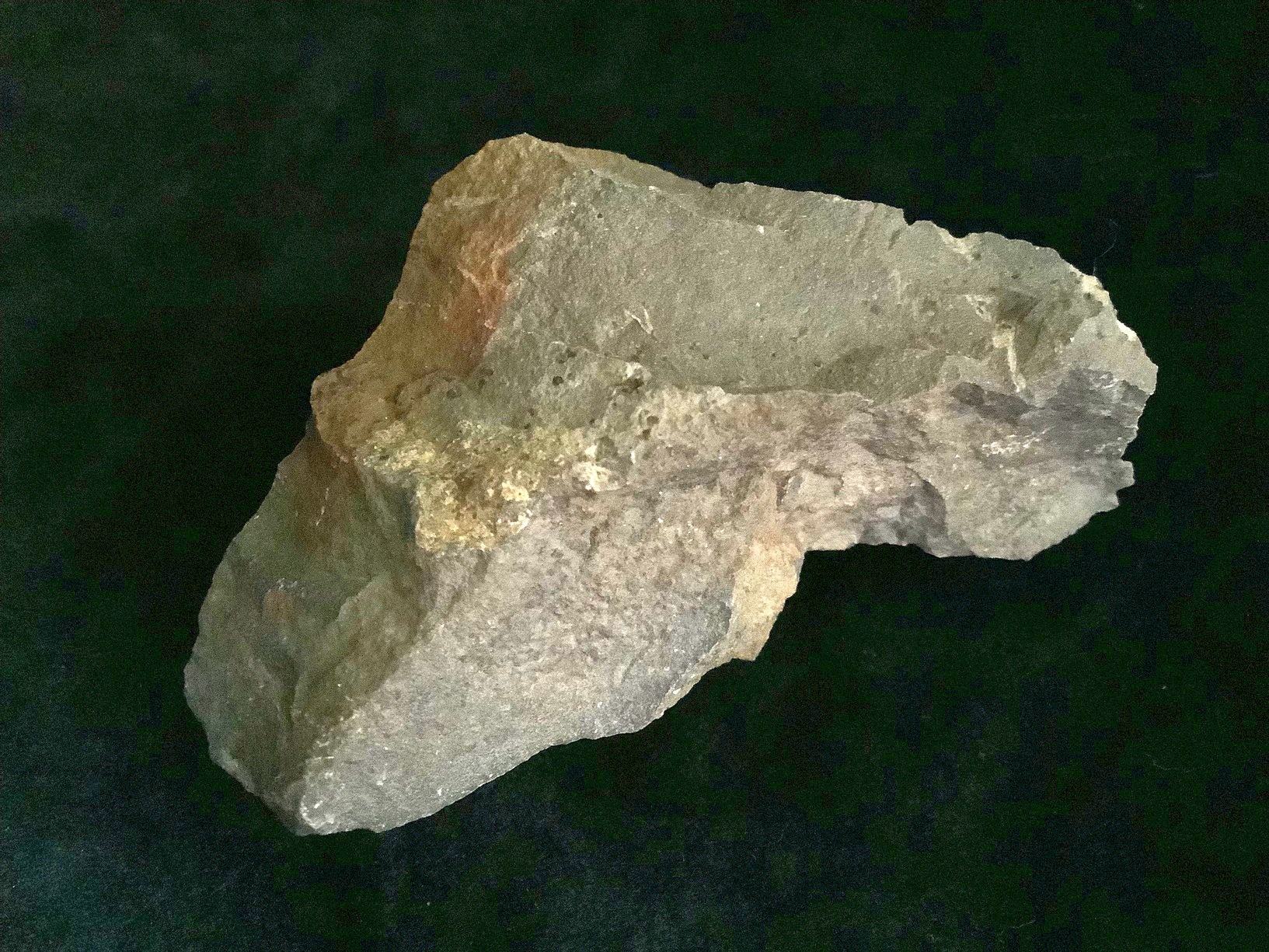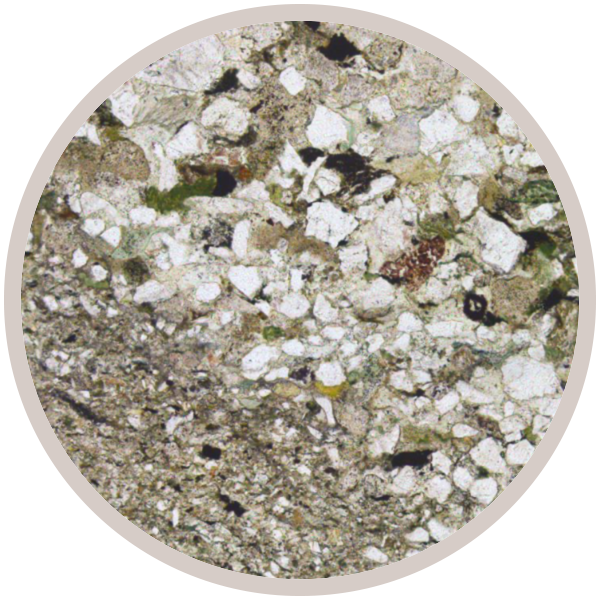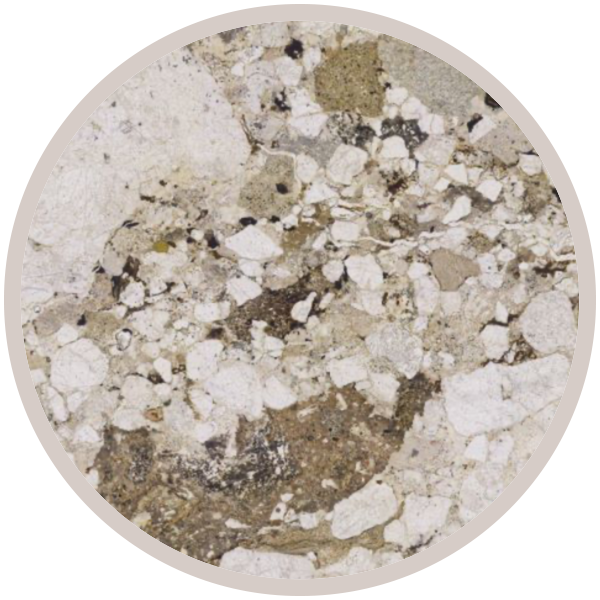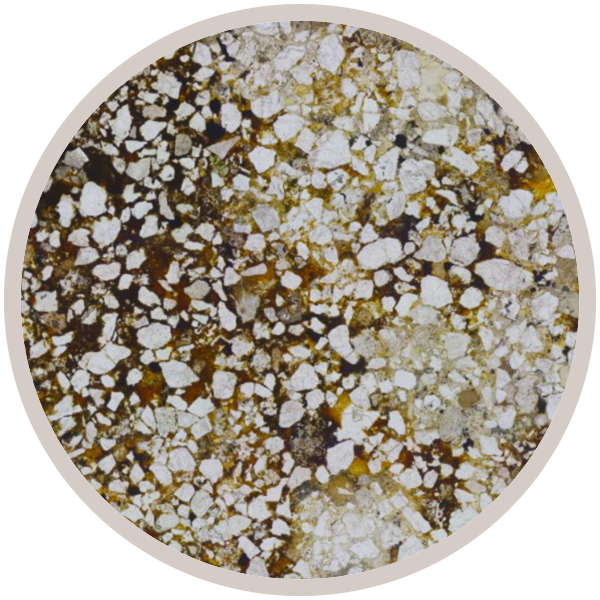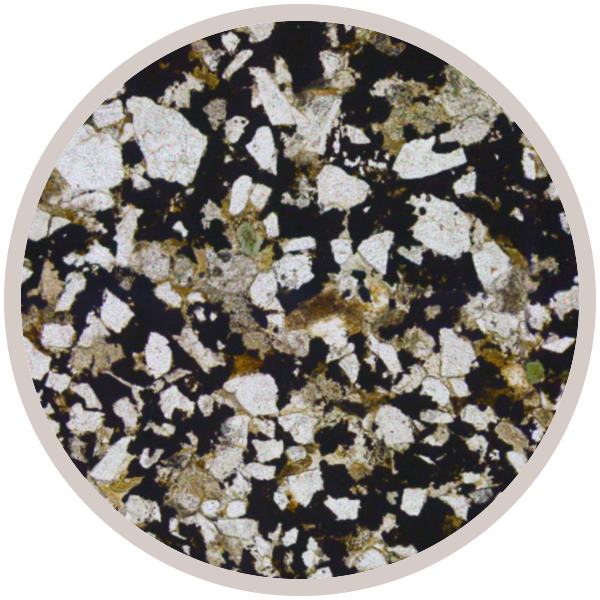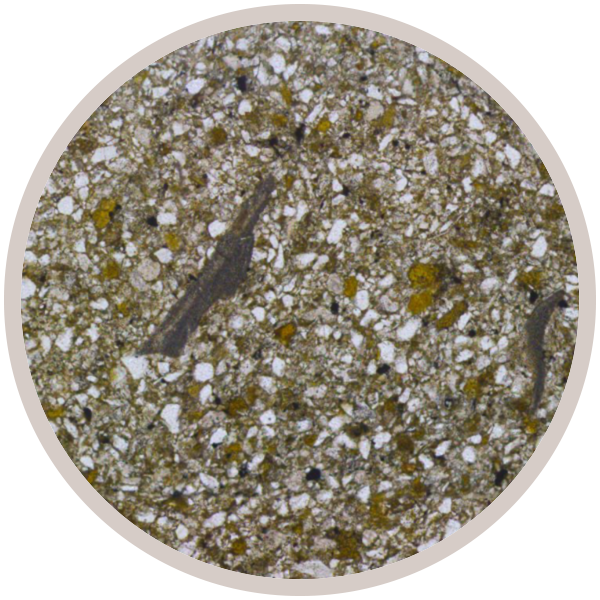
Fact sheet
Baked Carboniferous sandstone, from the same unit as SW5, but collected right next to the contact with the microgabbro intrusion (SW4 and SW13), near Highbridge Road Steps. The sandstone appeared baked; it was harder and flinty when hammered.
The sandstones were deposited in a low-lying, deltaic environment when the region lay near the equator. Flattened fossilised tree-trunks have been found in Carboniferous rocks close by in Brewin's Cutting, indicating that the area was thickly forested.
In thin section, the rock has a typical fragmentary, detrital texture; there are no obvious signs of contact metamorphism. If anything, the grainsize is finer than SW14 and SW15, which are further from the intrusion (though this may just mean this sample was a finer sandstone originally). Colour variation is patchy and there is no clear indication of bedding, which may be a microstructural effect of the contact metamorphism. Colourless quartz grains are mainly subrounded to subangular, but a few highly rounded grains are also visible. Feldspars are also present, generally with dusty alteration. There is much brown material: very little appears to be biotite mica, perhaps because it has been more altered in this sample. Much of the fuzzy dark brown matter along grain boundaries is probably a mixture of clays and iron oxide or similar insoluble material. Tiny clear laths of muscovite mica are very rare, as are polycrystalline grains.
Similarly to SW15, a different type of grain occurs sporadically throughout the section - but they look different in this rock. These have similar shape: elongate, typically gently undulating laths, or shorter fragments. But they are dark grey in colour, with little variation; some show paler or brownish layers. Most of these grains are isotropic, though a few show some portions with indistinct interference colours. Could these also be fragments of shells from the brachiopod Lingula, but baked by the intrusion and transformed into some other mineral?
This sample was collected as part of the 'Macro to Micro' project.
This Collection showcases the geodiversity of a classic geological site: the Saltwells National Nature Reserve in the West Midlands.
As well as displaying thin section and hand specimen views along with information setting them in the context of their landscapes, we also include perspectives and creative responses to the geological heritage of the sites from the local community.
| Explore the stories of the rock layers at Saltwells and Wren's Nest NNRs, designed by students at King Edward VI School, Stourbridge: |
This Collection was made possible by funding awarded to the 'Macro to Micro' project by the Natural Environment Research Council (NERC) under their 'Growing Roots' scheme.
